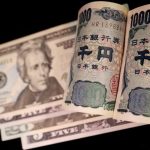
SINGAPORE (Reuters) – The battered yen found a footing on Wednesday on renewed threats of intervention from Japan and as investors turned their focus toward a Federal Reserve policy meeting later in the day.
U.S. interest rates are expected to stay on hold, though the release of Treasury refunding details may move the bond market.
Having dropped 1.7% on Tuesday to a one-year low of 151.74 per dollar, the yen stabilised at 151.32 in Asia trade, following more pointed-than-normal remarks from Japan’s top currency diplomat, Masato Kanda.
“Speculative trading seems to be the biggest factor behind recent currency moves,” Kanda told reporters in Tokyo, adding authorities were “on standby” to respond.
The Bank of Japan raised inflation forecasts on Tuesday, but not policy rates. It redefined its 1% limit on 10-year government bond yields as a reference rate, rather than a hard cap.
In the market, that tweak to policy wasn’t regarded as enough to close the wide interest rate gaps between Japan and other countries that has been responsible for the yen’s 13% decline this year.
“Let’s not forget that BOJ is normalising policy from ridiculously low levels,” said Claudio Irigoyen, global head of economics at Bank of America Global Research.
“It’s still the case that interest rate differentials are widening significantly in favour of the U.S. So the normalisation … is relatively fast for BOJ standards, but relatively slow relative to what we are seeing in the rest of the world.”
Deutsche Bank macro strategist Alan Ruskin said the slide in the yen, despite the BOJ tweak, shows it’s more evident than ever that a turnaround in the dollar/yen rate is likely to be driven by the dollar and the state of the U.S. economy.
It has also traded weaker than 160 per euro for the first time since 2008 on Tuesday, before recovering a little to 159.92 on Wednesday.
Other currency moves were mostly modest, though the New Zealand dollar slipped 0.3% to $0.5808 and was nearing a one-year low as softer-than-forecast employment data cemented expectations of an end to interest rate hikes.
Sterling slipped to $1.2125 and the euro – hurt by Tuesday’s slightly disappointing European growth figures – fell 0.1% to $1.0567.
“The data show the (European Central Bank’s) 450 basis points of interest rate hikes … are working to restrict demand,” said CBA analyst Carol Kong. “We estimate the Eurozone economy is now in recession.”
Factory activity indicators in China, Japan and South Korea showed activity shrinking, which dragged on trade-exposed currencies.
The Australian dollar slipped 0.1% to $0.6630. China’s yuan dipped marginally to 7.3190 per dollar.
A liquidity crunch in money markets pushed interbank rates for non-banks as high as 50% on Wednesday and 6% on Tuesday.
The U.S. dollar index inched higher to 106.75.
To read the full article, Click Here

